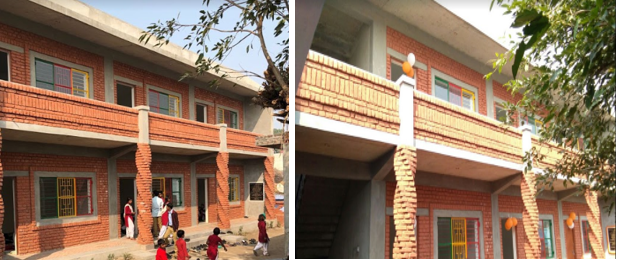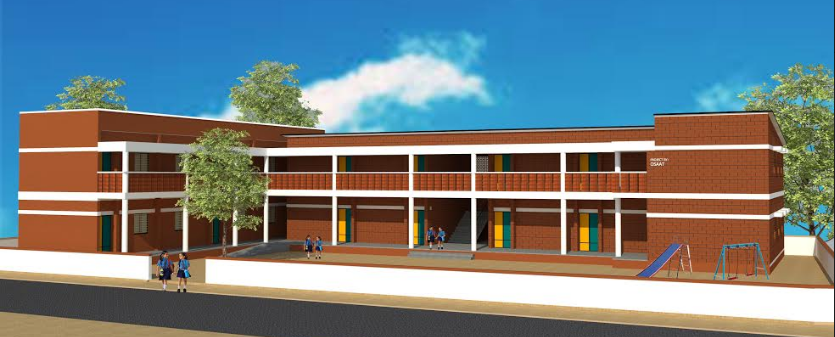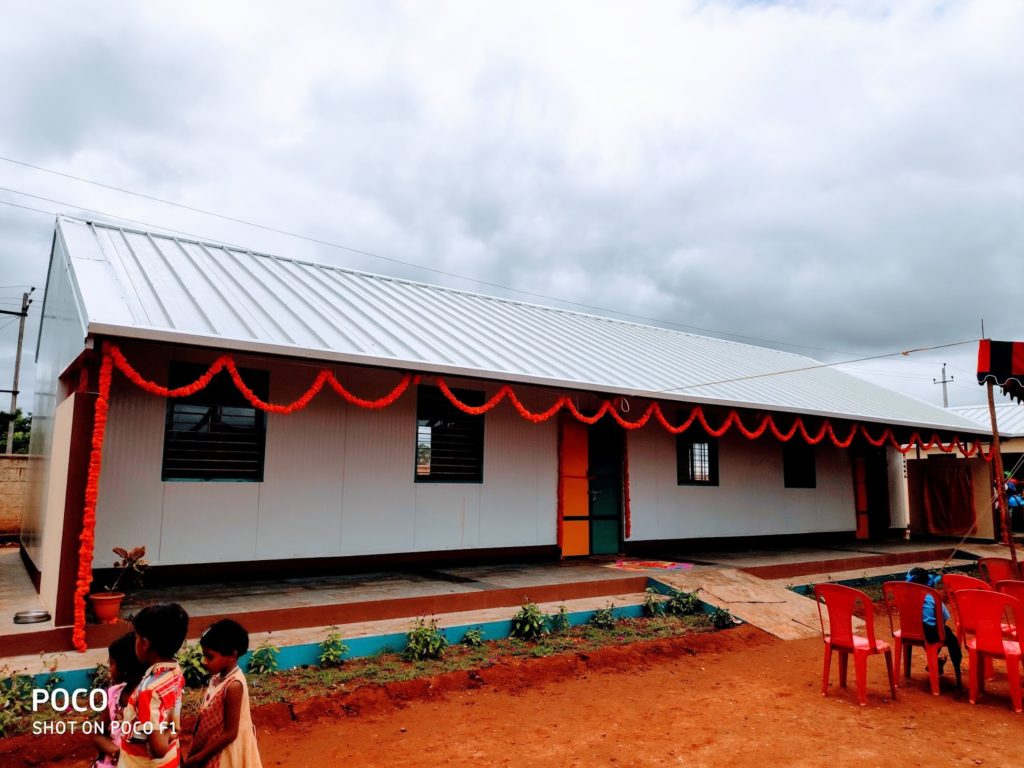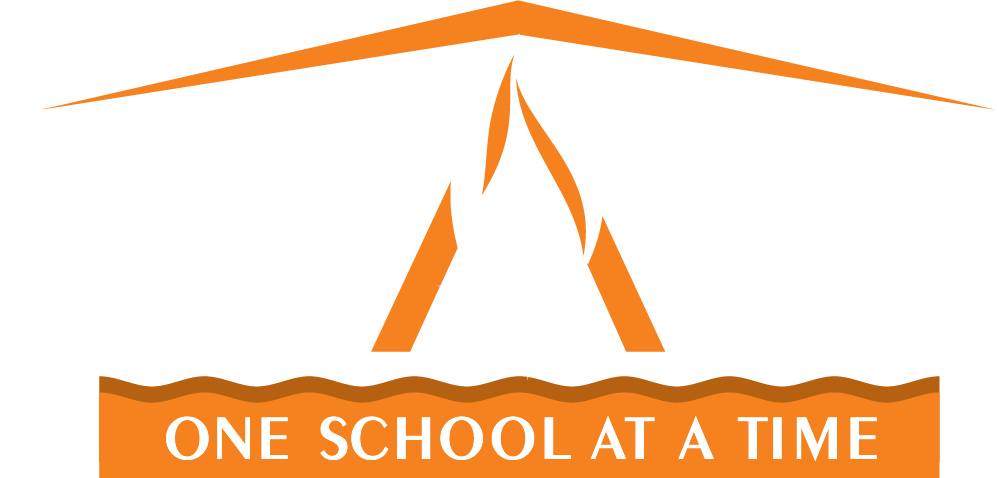Infrastructure – A step in the right direction
When we, at OSAAT, accept the proposal to construct a new building for a school, there are a number of discussions that happen to understand how to go about building the school. The architects & building contractors involved in this process dig deep into understanding the best, most efficient & environmentally sustainable approach in bringing up the building.
OSAAT’s mission is to build a strong, safe and healthy learning environment for kids in rural India. We strive to do so without compromising the environment, aesthetics or practicality. Let me illustrate what I mean.
OSAAT’s mission is to build a strong, safe and healthy learning environment for kids in rural India
First, let us look at the school in Rampura. For the construction of the walls, soil-cement blocks were used. These blocks are made using the soil available locally. With just 5% cement mixed in, these blocks are completely eco-friendly. Since these blocks were prepared on-site, we were able to completely forego the transportation cost that would have been incurred with the traditional burnt bricks or the cement blocks. The blocks were made by the local workforce and this helped the local families in terms of employment and prevented displacement of the labor force. These blocks provide an additional benefit of thermal comfort which, in the long run, helps the school reduce the usage of electricity. We also installed a rain-water harvesting system, which will eventually help improve the underground water levels. Also, to help explain rain-water harvesting to students, teachers now have a working model within their premises. We also used polycarbonate shutters for windows, which are strong enough to withstand any intentional damage by anti-social elements. Traditional glass windows can break easily and are difficult to replace. Lastly, we wanted to improve the aesthetics of the building. Having a new building always brings out positive energy, but having it painted in a manner never seen before is an added bonus! We chose Dussehra as the theme for painting the front of the school, and we had the interior of each class room painted with playful, yet inspirational themes. This is the first time ever that something like this has been done at a government school.

Dussehra theme for the front view 
Classroom walls painted to improve aesthetics 

Polycarbonate shutters for windows 
Rain water harvesting system
Next, we will look at the government school in Aben. This is OSAAT’s first ever project in the state of Manipur. Situated in a geographically challenging terrain, the school could not be built using the traditional building materials. Since the school is located in a remote location, transportation of materials was the most challenging aspect. To negate this issue, we decided to use only the locally available materials. All the materials used to re-layer the tin roof, cement the floor, replace of broken windows, construct a new toilet for girls were sourced from local vendors. Even though traditional construction materials were not used, we made it a point to use environmentally friendly yet structurally sound materials. Lastly, due to the location constraints, the school had issues with having constant electricity supply. To provide the necessary lighting, solar lighting was introduced. The school now has continuous electricity for its day-to-day needs and classes are not disrupted because of electricity issues.

Let us now take a look at the High School in Gaini village. This project is different from others as this was done in partnership with Mr. Arun Nagpal of Mrida Group, an organization dedicated to sustainable rural development using eco-friendly, organic and green methods. This project helped us understand what all can be done to put in place a simple, subtle, yet sophisticated look and feel for the entire project. We put in place a low/optimum cost design but with safety and longevity as a core criterion. Apart from using locally available, sustainable & eco-friendly resources, we also installed a rain-water harvesting system to help improve the water reserves

Apart from the ones mentioned above, I would also like to highlight two more schools which are still under construction – Govt Model Higher Primary Girls School, Malur town, Kolar district, Karnataka & Govt. Higher Primary School, Benkipura Village, Hunsuru Taluk, Mysore District, Karnataka. The school in Malur is being constructed using clay hollow blocks. These blocks have been selected because of their eco-friendly aspect. Apart from being 100% natural, these blocks keep the interiors cool during summer and warm during winter. The blocks enjoy good compressive strength, thereby making them an ideal material for infill masonry. Unlike cement blocks or solid bricks, clay hollow blocks are factory made and hence we are sure about the quality of the blocks. Most of the cement blocks or solid bricks encounter quality issue, which can lead to dampness and/or cracks. The other advantage of clay hollow block is that it gives a different feel to the building. To improve the aesthetics, only a part of the wall is plastered, and this has helped save construction cost. The school in Benkipura is being constructed using Puf Panel sheets due to the remote location of the school and the difficulty in capturing skilled local workforce. Puf Panel sheet helps us in reducing both the time and the cost of construction. Puf panels have high thermal efficiency, which ensures low heat transmission thereby resulting in energy savings. Because government schools find it hard to maintain the school infrastructure, Puf panel sheet has the added benefit of being maintenance free. Therefore, the funds received from the government can be used for teaching aids rather than on maintenance.


OSAAT always believes in adopting methods and measures that are progressive and result in a positive impact. Yes, our motto is to build a strong, safe and healthy learning environment for kids in rural India. If it means using locally available resources, be it labor or material, to provide an environmentally sustainable and cost-effective infrastructure without compromising strength and safety, we will explore and implement all such solutions.
To know more about each of the above schools in detail, please visit our site https://osaat.org/. We are always looking for innovative ideas when we take up a new school. If you have an idea that meets our objectives and can make a positive impact on our school projects, we would like to hear from you. Feel free to drop us a note below.





